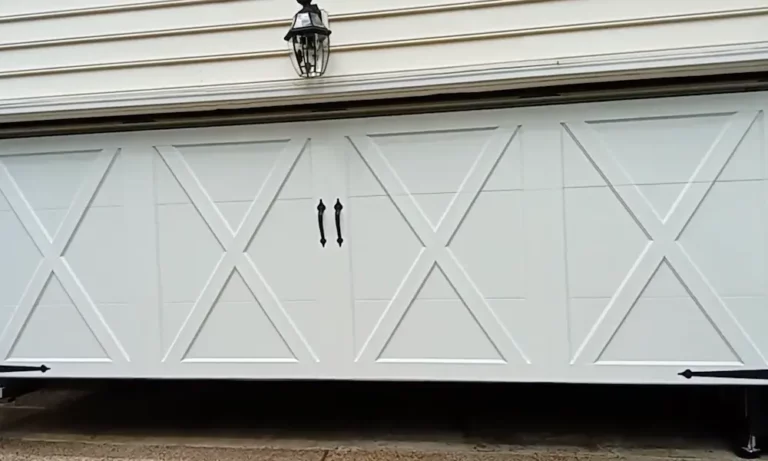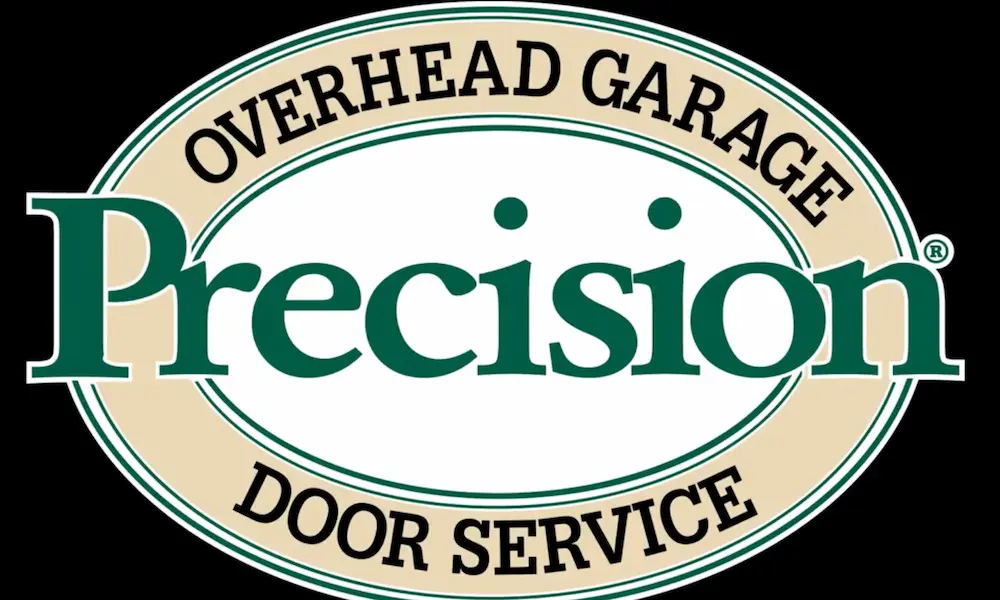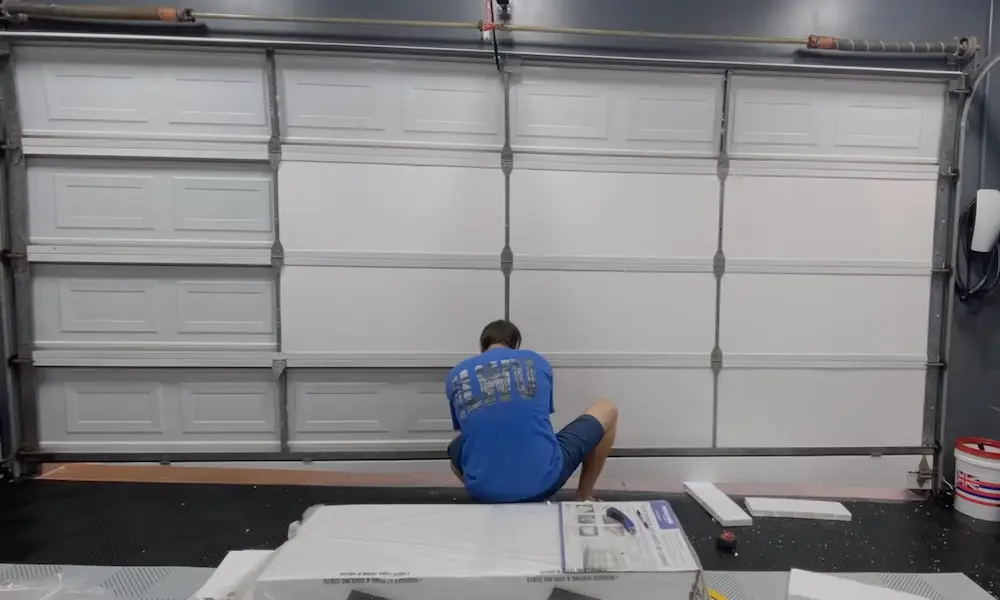You step into your garage, press the button, and… your garage door starts to open but stops just a few inches up. Frustrating, right? This common garage door problem can leave you stranded, late for work, or with groceries melting in your car. But don’t worry – most garage door issues that cause partial opening have straightforward solutions.
Common Reasons Your Garage Door Only Opens a Few Inches
Broken or Worn Springs
Garage door springs do the heavy lifting – literally. They counterbalance your door’s weight (which can be 200+ pounds) so the opener doesn’t strain.
When these springs break or wear out:
- Your door might open just 6-12 inches before stopping
- You might hear a loud “snap” when the spring breaks
- The door feels unusually heavy when you try to lift it manually
Safety warning: Don’t try to replace garage door springs yourself. A broken garage door spring can cause serious injuries. The springs store enormous energy – up to 200 pounds of tension – and require professional tools and expertise.
Misaligned Photo Eye Sensors
Those small sensors near the floor of your garage door track are critical safety devices. If they can’t “see” each other:
- Your door might open partially then reverse
- The sensors’ indicator lights may blink instead of staying solid
- The door behaves inconsistently, sometimes working and sometimes not
To fix misaligned sensors:
- Clean both sensor lenses with a microfiber cloth
- Check if the sensors are pointing directly at each other
- Gently loosen the brackets and adjust until the indicator lights stay solid
- Make sure nothing is blocking the beam path
Properly aligned sensors should have steady indicator lights, not blinking ones.
Track Misalignment or Damage
Your garage door runs on metal tracks. If these tracks get bent, misaligned, or damaged:
- The door moves unevenly or jerks during operation
- You hear grinding or scraping noises
- You can spot visible gaps between rollers and track
Here’s how to address track issues:
- Examine the tracks for obvious bends or damage
- Check if tracks are properly secured to the wall
- Clean tracks with a damp cloth to remove debris
- Tighten any loose bolts or brackets
For minor misalignments, you can loosen track bolts and gently tap the track into position with a rubber mallet.
Opener Motor or Gear Problems
The opener itself might be the culprit if:
- You hear the motor straining but the door barely moves
- The drive chain or belt seems loose or damaged
- The door stops at different heights each time
Try these fixes:
- Check and adjust the travel limits on your opener
- Tighten the drive chain if it’s loose
- Lubricate the opener rail with silicone spray
How to Troubleshoot When Your Garage Door Only Opens a Few Inches
Step 1: Test Manual Operation
Before diving into complex fixes, try this simple test:
- Pull the emergency release cord (usually a red handle hanging from the opener trolley)
- Attempt to lift the door manually
- The door should lift smoothly with minimal effort
If the door is extremely heavy or won’t stay up when raised halfway, you likely have broken springs.
Step 2: Check the Sensors
Look at the photo eye sensors near the floor:
- Are both indicator lights steady (not blinking)?
- Is anything blocking the beam path?
- Are the sensors clean and pointing directly at each other?
Sometimes simply cleaning the lenses with a soft cloth can solve intermittent door problems. For persistent issues, try realigning your garage door sensors by loosening their brackets and adjusting their position.
Step 3: Inspect the Tracks
Examine your door tracks for:
- Obvious bends, dents, or damage
- Loose mounting hardware
- Debris or buildup that could impede roller movement
- Proper vertical alignment (use a level to check)
Track misalignment often occurs after accidental impacts (like backing into the track) or when mounting hardware loosens over time.
Step 4: Examine the Opener Settings
If your door consistently stops at the same height:
- Locate the travel limit adjustment screws on your opener
- Make small adjustments following your opener’s manual
- Test the door operation after each adjustment
Many modern openers have digital controls for these adjustments, while older models use physical screws that may need turning.
Maintenance Tips to Prevent Garage Door Issues
Regular Lubrication
Keep your door moving smoothly by lubricating these parts every 6 months:
- Rollers (except nylon rollers)
- Hinges
- Tracks (clean first, then apply a thin coat)
- Springs
- Bearings
Use silicone spray or lightweight garage door lubricant – never use WD-40 as it can actually attract dirt over time.
Monthly Visual Inspection
Once a month, take 5 minutes to check:
- Springs for gaps or deformation
- Cables for fraying
- Rollers for cracks or excessive wear
- Hardware for loose bolts or screws
- Sensors for proper alignment
Catching these issues early prevents more expensive problems later.
Balance Test
Twice yearly, test your door’s balance:
- Disconnect the opener (pull the emergency release)
- Manually lift the door halfway
- The door should stay in place without rising or falling
If the door won’t stay put when halfway open, your springs likely need adjustment – a job for professionals.
When DIY Won’t Cut It
While many garage door issues have DIY solutions, certain problems require professional help:
- Spring replacement (always call a pro for this dangerous job)
- Cable repairs or replacement
- Major track damage or misalignment
- Opener motor replacement
- Structural damage to the door itself
Remember that a DIY spring replacement can lead to serious injury – the springs store enough energy to cause life-threatening injuries if mishandled.
Simple Fixes You Can Try Today
If your garage door only opens a few inches, try these quick fixes that don’t require special tools:
- Check for obstructions: Sometimes objects block the door’s path or trigger the safety sensors
- Replace the opener’s light bulbs: Some openers malfunction with LED bulbs – try standard incandescent bulbs instead
- Replace the remote batteries: Weak batteries can cause inconsistent operation
- Reset the opener: Unplug the opener for 1 minute, then plug it back in to clear electronic glitches
- Clean the sensor lenses: Use a clean, dry cloth to wipe away dust and cobwebs
Understanding Your Garage Door System
Your garage door is actually a complex system with several components working together:
| Component | Function | Common Problems |
|---|---|---|
| Springs | Counterbalance the door’s weight | Breaking, losing tension, rusting |
| Tracks | Guide the door’s movement | Misalignment, bending, debris accumulation |
| Rollers | Allow the door to move smoothly | Wearing out, binding, breaking |
| Sensors | Detect obstacles for safety | Misalignment, dirty lenses, wiring issues |
| Opener | Provides motorized operation | Motor failure, gear stripping, limit switch problems |
Understanding how these parts work together helps you diagnose issues when your garage door only opens a few inches.
Preventing Future Problems
Keep your garage door running smoothly with these preventive measures:
- Install temperature sensors: Extreme heat or cold can affect your opener’s electronics
- Keep tracks clean: Remove debris monthly with a stiff brush
- Tighten hardware regularly: Check and tighten bolts and screws biannually
- Replace rollers before they fail: Nylon rollers typically last 3-5 years
- Schedule annual professional inspection: Experts can spot problems before they become major issues
Following this maintenance schedule can extend your door’s life by years and prevent those frustrating mornings when your garage door won’t open properly.
By understanding why your garage door only opens a few inches and following these troubleshooting steps, you’ll save time, money, and frustration. Remember that while many garage door problems have simple DIY fixes, safety should always come first – especially when dealing with high-tension components like springs.
















